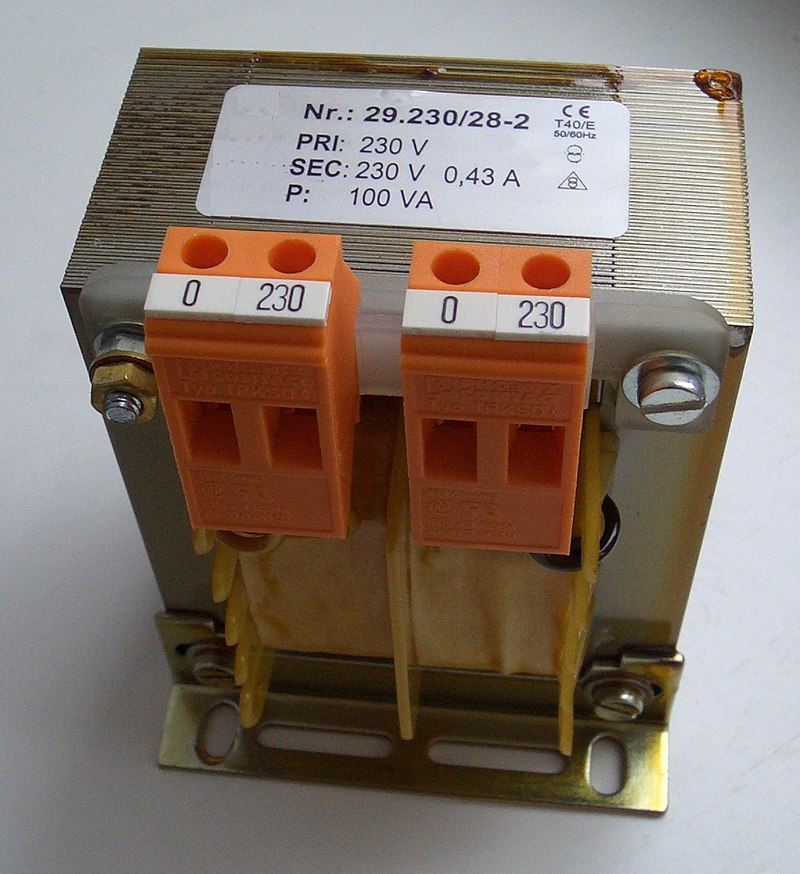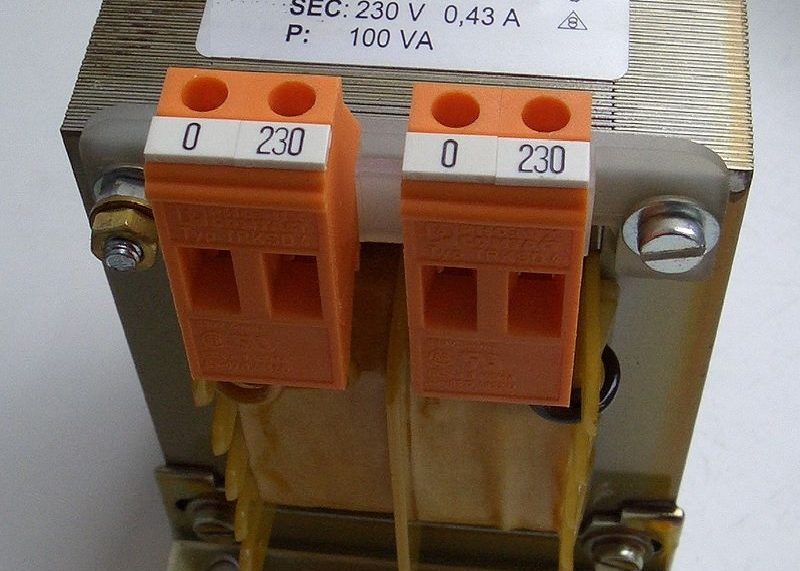Sometimes we see small isolation transformers in electronic devices and might be wondering what the use of this mini transformer is.
Single-phase power wiring uses a hot wire, a neutral wire, and a ground wire. If multiple devices share a single power line, those devices can have different ground potentials. This creates a problem known as a “Ground Loop.” Ground loops can cause problems with medical devices during tests. Also, power fluctuations and ground loops can affect transducers, making them measure incorrectly.
We can’t use many different voltage sources (like a car battery) for every device, so we need to use isolation transformers to protect those devices from surges in the power supply.
Isolation transformers are used to eliminate ground loops and block the high-frequency noise of the AC mains supply.
In this article, we will discuss the basic principle and applications of isolation transformers.
Basic Principle and Construction:
IIsolation transformers allow for the safe transfer of electrical power from a source of alternating current to an appliance or device
The galvanic isolation provided by the isolation transformer prevents a current from flowing between source and load. That way, the transformer can also block any DC components and high-frequency components of the AC mains without them affecting the electronics. This is typically used to protect against electric shock, suppress electrical noise in sensitive devices, or transfer power between two circuits that must not be connected.

Transformers used for power distribution are usually made from metal lamination, which is insulated with an insulating material. Transformers intended for use at high voltages have more winding and are insulated with higher voltages.
Transformers with a 1:1 turns ratio is designed to protect circuits from electrical shock. Earth ground protections, also known as earthing systems, protect people from dangerous electrical currents.
Ground loops cause interference which can be blocked by the isolation transformer. Power supplies for sensitive equipment such as computers, medical devices, or laboratory instruments must be protected from static electricity. These isolation transformers with electrostatic shields work well for this application.
Like a typical transformer, an isolation transformer has a primary and a secondary winding where these windings are wrapped on a common ferromagnetic core.
As mentioned earlier, isolation transformers mostly consist of an equal number of turns in their primary and secondary winding to keep both sides’ voltage equal.
A Faraday shield helps reduce common-mode noise and transients through a transformer.
The insulation between the primary and secondary windings in an isolation transformer is designed to prevent the direct conduction of electricity. The effectiveness of this insulation is measured by the leakage current.
Isolation transformers go through leakage current testing using hi-pot testers, which apply a high voltage across the insulation for checking the current leakage.
Applications:
Application in Medical Devices :
A high-voltage isolation transformer for medical applications needs to meet higher requirements in terms of leakage currents. There are specified maximum allowable leakage currents for environmental ground faults, equipment leakage faults, and patient leakage. Grounding devices prevent “grounding faults” and other types of electrical hazards. Make sure you use an approved grounding device (like an Earth wire) to protect yourself from electrical shock hazards. An enclosure current is the current that flows in a wire when a high-frequency alternating current is present between the inside and outside of the wire. When you measure electricity using a multi-meter, “patient leakage” is the current that flows from the device to the ground. This is different than the DC voltage measured by an analog meter. Most smart home security systems sold in the US are certified by Underwriters Laboratories (UL), which tests for safety under typical use conditions. In fact, 9 out of the top 10 best sellers in this category are certified under UL.
Switched Mode Power Supplies (SMPS):
An isolation transformer is commonly used to provide power to not grounded devices to the AC line. Switched Mode Power Supplies (SMPS) are devices that convert electricity from one form to another. They’re extremely efficient (up to 99%+) and are usually used to convert alternating current to direct current in electronics.

In the above figure, the Isolation transformer is marked as C.
To eliminate the risk of electrical shock, the output needs to be isolated from mains voltage so that the output becomes safe to touch by humans without getting an electrical shock. These isolated power supplies always use an isolation transformer to transfer electrical energy.
In this case, the primary side of the transformer is connected to the input source, while the secondary side delivers clean power to the load.
Conclusion:
I hope this article has given you enough information about isolation transformers. So next time when you see a small transformer quietly sitting in any sophisticated electronic device, make sure you give them proper attention as these transformers help controlling leakage currents. Also, they block the high-frequency harmonics and noise. We can safely say that isolation transformers are of great importance.
